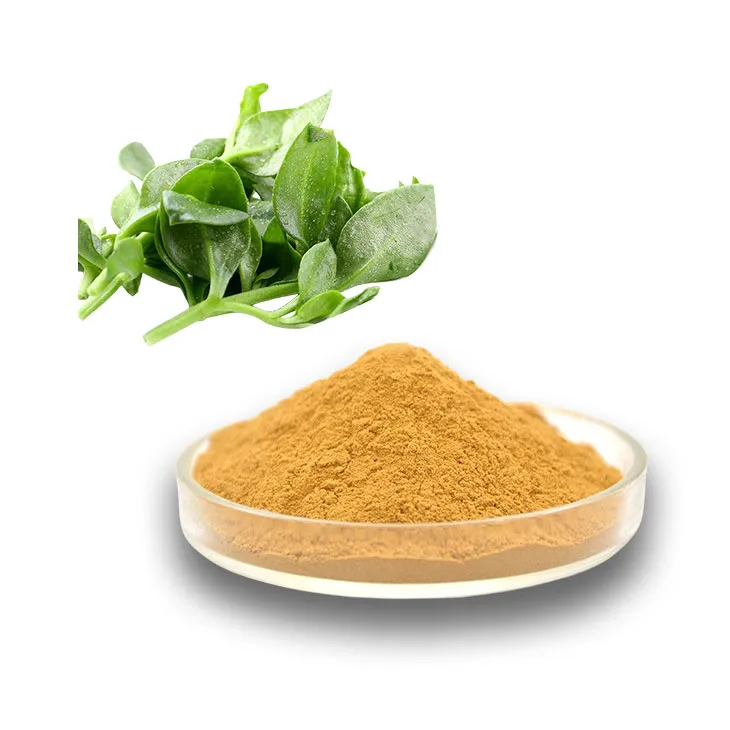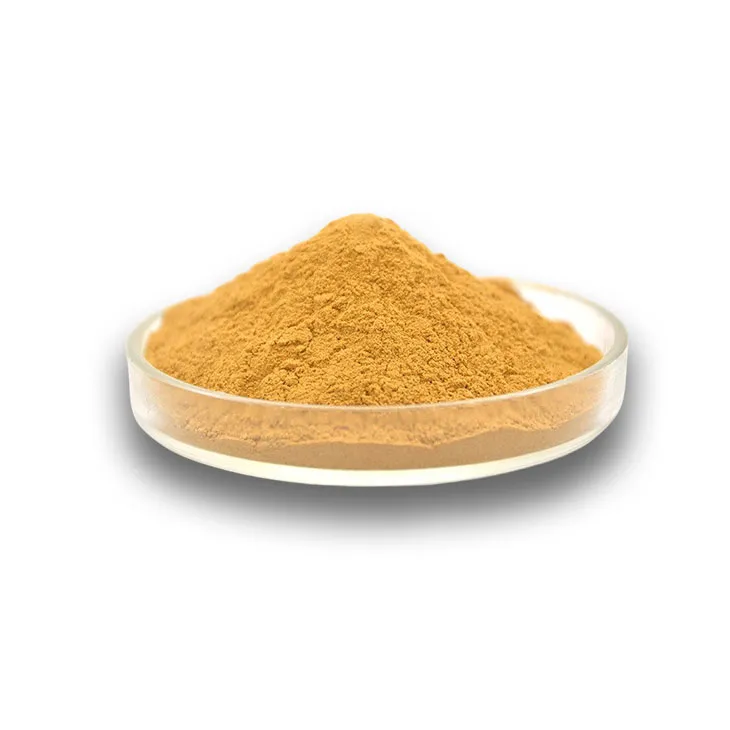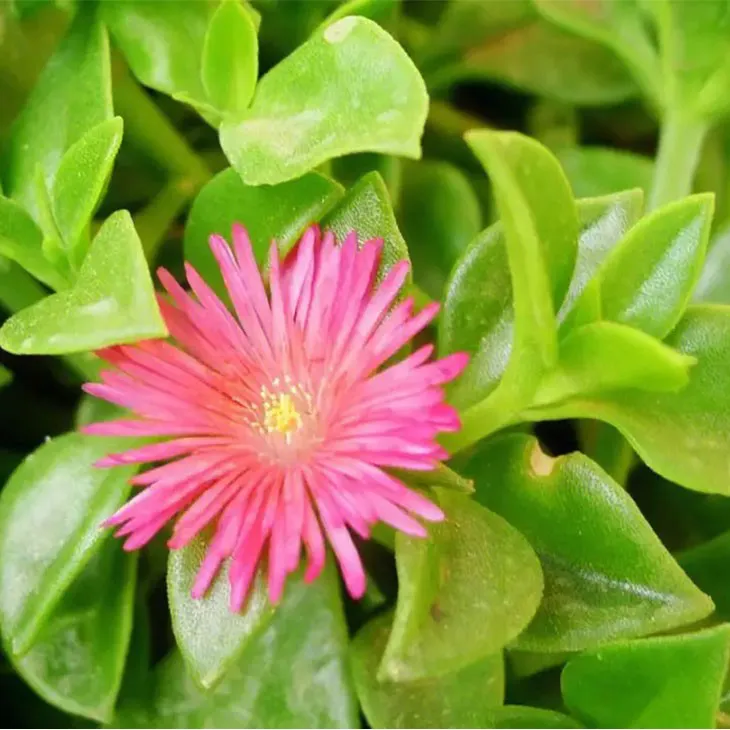- 0086-571-85302990
- sales@greenskybio.com
Andrographis paniculata extract powder: From leaves to extraction.
2024-11-14

1. Introduction
Andrographis paniculata, a plant native to South and Southeast Asia, has been used in traditional medicine systems for centuries. Andrographis Paniculata Extract Powder is a product that has gained significant attention in recent years due to its potential health benefits. This article aims to explore the entire process from the leaves of Andrographis paniculata to the extraction of its valuable components into a powder form, as well as its various applications in different fields.

2. Characteristics of Andrographis paniculata
2.1 Botanical features
Andrographis paniculata is an annual herbaceous plant that belongs to the family Acanthaceae. It typically grows to a height of about 30 - 110 centimeters. The leaves are lanceolate, opposite, and have a distinct veination pattern. The plant produces small, white or pale pink flowers in terminal and axillary racemes.
2.2 Chemical composition
The plant contains a rich array of chemical compounds, which are responsible for its medicinal properties. The most important ones include andrographolide, dehydroandrographolide, and neoandrographolide. These diterpenoid lactones are the major bioactive components in Andrographis paniculata. In addition, it also contains flavonoids, polyphenols, and other minor constituents that may contribute to its overall pharmacological effects.

3. The Extraction Process
3.1 Harvesting of leaves
The first step in obtaining Andrographis Paniculata Extract Powder is the proper harvesting of the leaves. Leaves are usually harvested when the plant reaches its optimal growth stage. This is typically determined by factors such as the age of the plant, the color and texture of the leaves, and the environmental conditions. Harvesting should be done carefully to avoid damage to the plant and to ensure the quality of the leaves. It is important to note that sustainable harvesting practices are crucial to maintain the long - term availability of the plant.
3.2 Pretreatment of leaves
Once the leaves are harvested, they need to be pretreated before extraction. This may involve cleaning the leaves to remove any dirt, debris, or other contaminants. After cleaning, the leaves may be dried, either in the sun or using artificial drying methods. Drying helps to reduce the moisture content of the leaves, which is important for the subsequent extraction process. In some cases, the leaves may also be ground into a fine powder or cut into small pieces to increase the surface area available for extraction.
3.3 Extraction methods
- Solvent extraction: This is one of the most common methods used for extracting the bioactive compounds from Andrographis paniculata leaves. Solvents such as ethanol, methanol, or water can be used. Ethanol is often preferred as it can dissolve a wide range of compounds and is relatively safe for use. In this method, the pretreated leaves are soaked in the solvent for a certain period of time, usually several hours to days. The solvent then extracts the bioactive compounds from the leaves. After extraction, the solvent is separated from the plant material, usually by filtration or centrifugation.
- Supercritical fluid extraction: This is a more advanced extraction method. Supercritical carbon dioxide (scCO₂) is often used as the extraction medium. The advantage of this method is that it can operate at relatively low temperatures, which helps to preserve the thermally labile compounds in the plant. Also, scCO₂ has a high diffusivity and low viscosity, which enables it to penetrate the plant material more effectively and extract the desired compounds. However, this method requires specialized equipment and is more expensive compared to solvent extraction.
3.4 Concentration and drying
After extraction, the resulting solution contains the extracted bioactive compounds along with the solvent. To obtain the extract powder, the solution needs to be concentrated to reduce the volume of the solvent. This can be done by techniques such as evaporation under reduced pressure. Once the solvent is removed to a large extent, the remaining concentrated extract can be dried to form a powder. Drying methods can include spray drying, freeze - drying, or vacuum drying. Spray drying is a commonly used method in the industry as it is relatively fast and can produce a fine powder with good flowability.

4. Potential Applications
4.1 In traditional medicine
In traditional medicine systems such as Ayurveda and Traditional Chinese Medicine (TCM), Andrographis paniculata has been used for a variety of ailments. It has been used to treat fever, inflammation, infections, and digestive disorders. The extract powder can be formulated into different traditional medicine preparations such as decoctions, tinctures, or pills. For example, in Ayurveda, a decoction made from Andrographis paniculata leaves is used to reduce fever and improve the body's resistance against diseases.
4.2 In modern pharmaceuticals
- Antimicrobial properties: The bioactive compounds in Andrographis Paniculata Extract Powder, especially andrographolide, have shown antimicrobial activity against a wide range of bacteria, viruses, and fungi. This makes it a potential candidate for the development of new antimicrobial drugs. For instance, research has shown that it can inhibit the growth of Staphylococcus aureus, a common pathogen responsible for various infections.
- Anti - inflammatory effects: Chronic inflammation is associated with many diseases such as arthritis, cardiovascular diseases, and cancer. The extract powder has been found to possess anti - inflammatory properties by inhibiting the production of inflammatory mediators such as cytokines and prostaglandins. This makes it a promising agent for the treatment of inflammatory diseases.
- Immunomodulatory activity: It has been demonstrated that Andrographis paniculata extract powder can modulate the immune system. It can enhance the immune response in cases of immunosuppression and also regulate the overactive immune system. This dual - action property makes it useful in conditions where immune balance needs to be restored, such as in autoimmune diseases or during post - illness recovery.
4.3 In the nutraceutical industry
With the increasing demand for natural health products, Andrographis paniculata extract powder has found its place in the nutraceutical industry. It can be incorporated into dietary supplements in the form of capsules, tablets, or powders. These products are marketed for their potential health benefits such as boosting the immune system, improving digestion, and providing antioxidant protection. Consumers are increasingly interested in natural alternatives to synthetic drugs, and Andrographis paniculata extract powder offers such an option.

5. Significance in Various Fields
5.1 In medicine
The significance of Andrographis paniculata extract powder in medicine cannot be overstated. Its multiple pharmacological activities make it a valuable resource for the development of new drugs and therapies. In addition to the applications mentioned above, ongoing research is exploring its potential in the treatment of other diseases such as diabetes, neurodegenerative diseases, and liver diseases. The extract powder may also be used in combination with other drugs to enhance their efficacy or reduce their side effects.
5.2 In agriculture
Some studies have suggested that Andrographis paniculata extract powder can be used in agriculture. It may have potential as a natural pesticide or fungicide due to its antimicrobial properties. By using natural products like Andrographis paniculata extract powder in agriculture, it is possible to reduce the use of synthetic pesticides and fungicides, which are often harmful to the environment and human health. Additionally, it may also be explored for its role in promoting plant growth and enhancing plant resistance to diseases.
5.3 In the cosmetic industry
The antioxidant and anti - inflammatory properties of Andrographis paniculata extract powder make it a potential ingredient in the cosmetic industry. It can be used in skin care products such as creams, lotions, and serums. These products can be formulated to target skin problems such as acne, inflammation, and premature aging. The extract powder may help to protect the skin from oxidative stress and improve skin health.
6. Conclusion
Andrographis paniculata extract powder, derived from the leaves of the Andrographis paniculata plant through a series of extraction processes, holds great potential in various fields. Its traditional use in medicine has provided a basis for modern research into its pharmacological properties. With its diverse range of applications in modern pharmaceuticals, nutraceuticals, agriculture, and the cosmetic industry, it is a plant - based product that is likely to gain more attention in the future. However, further research is still needed to fully understand its mechanisms of action, optimize the extraction process, and ensure its safety and efficacy in different applications.
FAQ:
1. What are the main characteristics of Andrographis paniculata?
Andrographis paniculata is a herbaceous plant. It typically has lance - shaped leaves. The plant is known for its bitter taste. It contains various bioactive compounds such as andrographolides, which contribute to its medicinal properties.
2. How is the extraction process of Andrographis paniculata extract powder carried out?
The extraction process usually involves several steps. First, the leaves of Andrographis paniculata are collected. Then, they may be dried and ground into a fine powder. Solvents like ethanol or water can be used to extract the active compounds from the powder. Through techniques such as maceration, percolation or reflux extraction, the desired extract powder can be obtained. After that, purification and concentration steps may be carried out to get a high - quality extract powder.
3. What are the potential applications of Andrographis paniculata extract powder in traditional medicine?
In traditional medicine, Andrographis paniculata extract powder has been used for treating various ailments. It is often used to relieve fever, as it has antipyretic properties. It may also be used for digestive problems, as it can help in improving digestion and reducing inflammation in the digestive tract. Additionally, it has been used for treating respiratory infections due to its antibacterial and antiviral properties.
4. How does Andrographis paniculata extract powder play a role in modern pharmaceuticals?
In modern pharmaceuticals, the extract powder is of great interest due to its bioactive compounds. The andrographolides present in it have shown potential in drug development. For example, they may be studied for their anti - inflammatory, antioxidant and immunomodulatory effects. Researchers are exploring ways to develop new drugs based on these properties for treating diseases such as autoimmune disorders, cancer and cardiovascular diseases.
5. What are the challenges in the extraction of Andrographis paniculata extract powder?
One of the challenges is to ensure the extraction of the desired bioactive compounds while minimizing the extraction of unwanted substances. The choice of solvent and extraction conditions needs to be optimized carefully. Another challenge is the standardization of the extraction process to ensure consistent quality of the extract powder. Also, the cost - effectiveness of the extraction process needs to be considered, especially when scaling up for commercial production.
Related literature
- Andrographis paniculata: Phytochemistry, Pharmacology and Clinical Properties"
- "The Extraction and Analysis of Bioactive Compounds from Andrographis paniculata"
- "Andrographis paniculata Extract: Traditional Use and Modern Perspectives"
- ▶ Hesperidin
- ▶ Citrus Bioflavonoids
- ▶ Plant Extract
- ▶ lycopene
- ▶ Diosmin
- ▶ Grape seed extract
- ▶ Sea buckthorn Juice Powder
- ▶ Fruit Juice Powder
- ▶ Hops Extract
- ▶ Artichoke Extract
- ▶ Mushroom extract
- ▶ Astaxanthin
- ▶ Green Tea Extract
- ▶ Curcumin
- ▶ Horse Chestnut Extract
- ▶ Other Product
- ▶ Boswellia Serrata Extract
- ▶ Resveratrol
- ▶ Marigold Extract
- ▶ Grape Leaf Extract
- ▶ New Product
- ▶ Aminolevulinic acid
- ▶ Cranberry Extract
- ▶ Red Yeast Rice
- ▶ Red Wine Extract
-
Hedyotis Diffusa Extract
2024-11-14
-
Cranberry Extract
2024-11-14
-
Curcumin
2024-11-14
-
Pine bark Extract Powder
2024-11-14
-
Baicalin
2024-11-14
-
Sea buckthorn Juice Powder
2024-11-14
-
Red Wine Extract
2024-11-14
-
Marigold Extract
2024-11-14
-
Hawthorn powder
2024-11-14
-
Phyllanthus Emblica Extract
2024-11-14





















